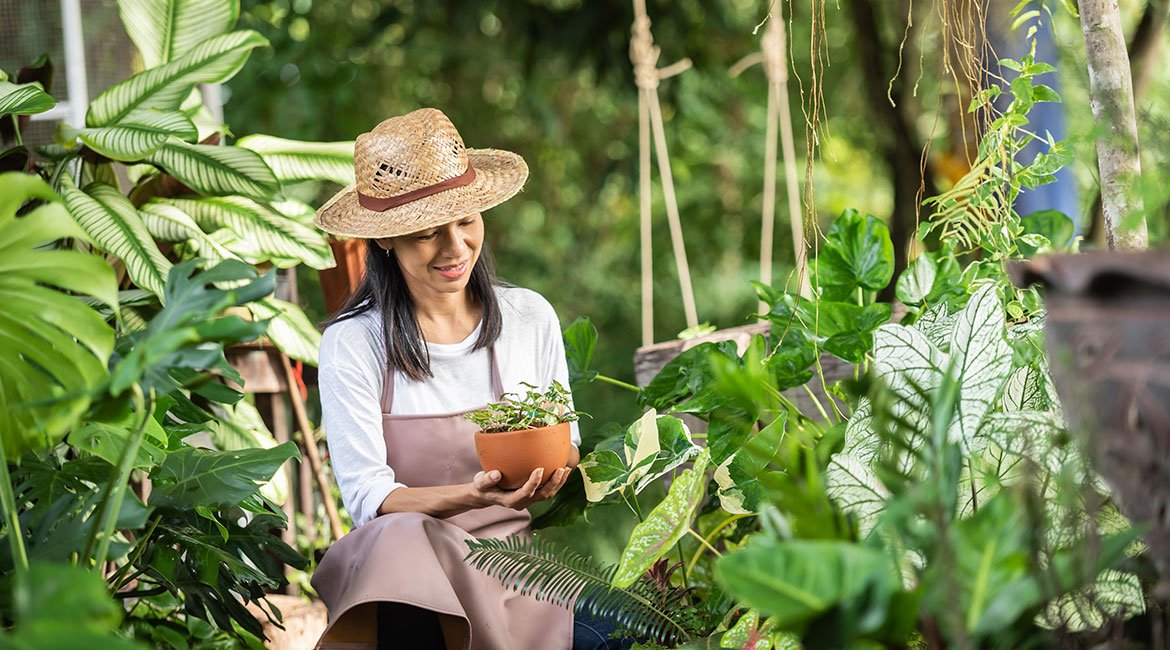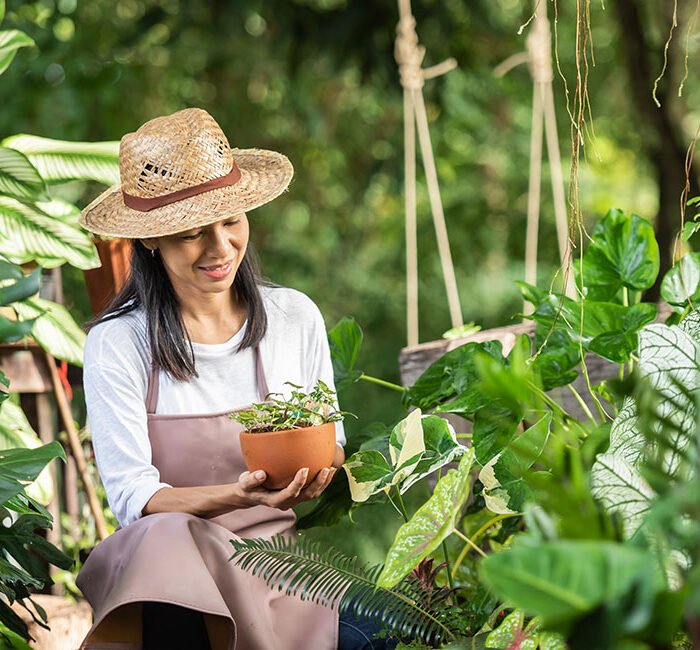Okay, let’s set the scene. Picture me: a well-meaning, hopelessly average suburban homeowner staring out the window at my backyard, which can only be described as a “hot mess.” Grass was patchy at best, weeds had taken over like they were auditioning for a role in Little Shop of Horrors, and don’t even get me started on the random assortment of plants I’d picked up on impulse at garden centers over the years (spoiler: none of them were thriving). If my garden was a movie, it’d be a drama—stressful, dramatic, and honestly, a little depressing.
But, oh, how I longed for that picture-perfect, ‘come over for a BBQ and instantly feel relaxed’ vibe that so many of my neighbors had going on. It looked effortless when they did it. Their gardens looked like they stepped out of Better Homes and Gardens, while mine looked like a neglected toddler had been let loose with a garden rake. Not cool.
So, after much procrastination, I finally decided to get serious about designing a garden that would actually make me want to hang out in it, rather than avoiding eye contact with it like some kind of guilty secret. I’d always heard about “professional landscaping services” around Northampton, but honestly, I thought, “Oh, that’s for the fancy people with endless cash to burn.” But as I started looking into it, I realized, hey, maybe this could actually work for me too.
Here’s the thing: creating the garden of your dreams isn’t as hard as it seems, as long as you break it down step by step. I did it, and if I can go from “total garden disaster” to “this is a vibe,” you can too.

Step 1: Accepting My Garden’s Current State (And Not Freaking Out)
Let’s be real—if you’re about to embark on a garden redesign journey, the first step is accepting that what you’ve got right now… might be a bit of a train wreck. I had to take a long, hard look at my yard and admit that it wasn’t going to magically fix itself. It wasn’t going to turn into one of those perfectly curated, Instagram-worthy spaces where all the plants coexist in blissful harmony and every flower seems to be blooming in perfect sync with the weather. Nope. That would take some work.
Here’s how I came to peace with the mess:
- Grass: Not great. Think of it like a patchwork quilt made up of bald spots and patches of overgrown weeds.
- Shrubs: Old, scraggly, and probably half-dead. I can’t even remember what they originally were at this point.
- Random plants: Well, I had no idea what was what. They were like a surprise every time they bloomed, and not always a good one.
- The layout: A complete disaster. I had a random mix of paths, no real flow, and no idea where the sun hit (which is important, I later learned).
I had to let go of the guilt. The past is the past, and the future was a garden waiting to happen. I grabbed a pen and paper, took a deep breath, and thought, “This is my garden, and we’re going to fix it.”
Step 2: Understanding My Space (AKA, Avoiding the “I Just Want All the Things” Trap)
If you’re like me, your first instinct when designing your garden is to throw everything in there. “I want a gazebo! And a water feature! And a vegetable patch, and a firepit, and… oh yeah, some flowers.” But trust me—this way lies madness. What I needed was functionality—a garden that worked for my lifestyle, not one that looked like a random collection of Pinterest boards.
So, the first step in my redesign was to spend some time just observing my space. I watched where the sun hit at different times of the day (hello, natural light!), and where the shade was, and noticed how much wind certain areas got. I looked at the flow of the yard, like, how could I get from point A to point B without tripping over a tree stump? How could I create cozy nooks to sit and sip wine on a Saturday afternoon, without having to wade through ankle-deep grass?
Once I figured out the basic structure of my space, I took a step back and started asking myself:
- What do I really want to use the garden for? (Spoiler: sitting outside with a glass of rosé, ideally not getting attacked by bees, was top priority.)
- What do I not need? (Goodbye, random decorative gnome. You’re not fooling anyone.)
- What’s the long-term vision? (I wanted a garden that would look good year-round, not just in the summer. This meant choosing plants with staying power.)
This step was crucial because it helped me realize that less is more. I didn’t need everything at once, and I could build slowly as I went. But it was important to have a direction, rather than just throwing things at the wall to see what stuck.
Step 3: Working with the Pros (Or, “I’m Not Too Proud to Ask for Help”)
Look, I’ll admit it: I’m not a gardener. I can kill a cactus if I’m not careful. (Don’t ask.) So, I knew from the start that I was going to need a little help to get this garden design right. Enter the landscaping professionals.
I had the pleasure of working with a local team of experts who helped me narrow down my design ideas and brought in that professional touch that made everything feel… well, polished. They helped me decide on:
- The layout: No more awkward pathways that led to nowhere. Everything had a purpose, and there was a natural flow from one area to the next.
- Plant selection: I wanted something that would look lush but wasn’t high maintenance. They recommended a mix of native plants, which are perfect for Northampton’s climate and require less water and care. Plus, they look stunning year-round.
- Hardscaping: I hadn’t even thought about it, but adding patios, raised beds, and stone pathways was a game-changer. It gave my garden structure and made it usable, not just pretty.
And while I may not have been elbow-deep in soil myself, I did get to actively participate in choosing the plants and design elements, which made me feel like I was actually part of the process.
Step 4: Choosing Plants That Make Sense (Not Just Pretty Ones)
Here’s a biggie: plant selection. It’s easy to go for those gorgeous flowers you see in magazines, but the reality is, some plants are just too high-maintenance, or they don’t even thrive in your climate. I learned the hard way that not all plants are created equal—some are super picky, while others basically thrive on neglect.
My landscaping team introduced me to the magic of native plants, which are perfectly suited to our Northampton environment. I went with a mix of flowers, shrubs, and grasses that:
- Don’t require excessive watering (hello, drought-tolerant beauties!).
- Are low-maintenance (I’m not exactly the type to water my garden daily).
- Look great year-round (I wanted pops of color in the spring, summer, and fall).
Some of my new favorites include:
- Black-eyed Susans: They’re bold, bright, and practically beg to be noticed. They also attract butterflies, so double points for that.
- Lavender: Not only does it smell amazing, but it thrives in Northampton’s soil and is low-maintenance.
- Daylilies: These guys are resilient. They bloom over a long period and can handle a little neglect (thank goodness).
- Hostas: Perfect for those shaded areas that nothing else will grow in. Plus, they’re lush and green, and who doesn’t love a little greenery?
I also threw in some herbs (because, why not?)—a little kitchen herb garden in a sunny corner of my yard has been the best decision I’ve made in years. I now feel like an actual grown-up, harvesting my own basil for pasta.
Step 5: Bringing the Space to Life (Lighting, Seating, and That “Wow” Factor)
Okay, this is the fun part: accessorizing. Once the basic structure and plants were in place, it was time to add the finishing touches that would give my garden that “wow” factor. Here’s what I did:
- Lighting: I installed string lights around the seating area (nothing says “I’m sophisticated” like twinkling lights in the evening), as well as some solar-powered garden lights along the pathways. The result? It went from “meh” to “magical” in one evening.
- Seating: No one wants to stand in their garden, right? I added a comfy bench under a tree, perfect for reading or catching up with friends.
- Focal Points: I placed a water feature in one corner. It’s a small fountain, but it makes the whole space feel calm and serene. Plus, it helps with the vibe when I want to pretend I’m at a spa.
And then, just when I thought I was done, I realized I could add some personal touches: a few decorative pots, some cute garden statues (not gnomes, promise), and a cozy throw blanket on the bench for those cooler nights. Little things, but they really make it feel like home.
Step 6: Maintenance (Because It’s Not Just Going to Water Itself)
Okay, I know I just made it sound like the garden design process is a one-time thing, but spoiler alert: it’s not. Maintenance is key. I’ve set up a basic routine for myself:
- Weekly check-ins: Just walking around, checking for weeds, dead leaves, or anything that needs a little love.
- Seasonal prep: Cleaning up after the fall, trimming back plants, and getting ready for the colder months (not my favorite part, but it’s worth it).
- Watering schedule: Since my plants are mostly low-maintenance, I’m not out there with a hose every day, but I do make sure the garden gets a good soak every week.
Final Thoughts: You’ve Got This, Too!
If you’re reading this and thinking, “Okay, this sounds like a lot of work,” let me tell you—yes, it’s work. But it’s also so worth it. My garden is a sanctuary now—a place where I can relax, unwind, and enjoy a glass of wine without stressing about whether my plants are on life support.
So, don’t be afraid to ask for help when you need it, trust the professionals, and remember that your garden should be an extension of you. If I can turn my backyard from disaster zone to dream space, so can you.
Happy gardening, Northampton! 🌻🌿🌞





Comments (8)
Jason C. Cavazos
Nam saepe qui aut eligendi. Voluptatibus dolor dolores omnis dolorum nihil. Pariatur dolorem iste est consequatur est modi. Quia iure iste rerum velit sed autem.
Jason C. Cavazos
Nam saepe qui aut eligendi. Voluptatibus dolor dolores omnis dolorum nihil. Pariatur dolorem iste est consequatur est modi. Quia iure iste rerum velit sed autem.
Jason C. Cavazos
Nam saepe qui aut eligendi. Voluptatibus dolor dolores omnis dolorum nihil. Pariatur dolorem iste est consequatur est modi. Quia iure iste rerum velit sed autem.
Jason C. Cavazos
Nam saepe qui aut eligendi. Voluptatibus dolor dolores omnis dolorum nihil. Pariatur dolorem iste est consequatur est modi. Quia iure iste rerum velit sed autem.
Jason C. Cavazos
Accusamus enim a rerum veniam modi sint. Eos officiis et illo harum voluptate eligendi. Quo atque nesciunt consequatur in iusto neque fugiat. Ipsam ut quidem similique sit qui est eligendi cum.
Jason C. Cavazos
Accusamus enim a rerum veniam modi sint. Eos officiis et illo harum voluptate eligendi. Quo atque nesciunt consequatur in iusto neque fugiat. Ipsam ut quidem similique sit qui est eligendi cum.
Jason C. Cavazos
Accusamus enim a rerum veniam modi sint. Eos officiis et illo harum voluptate eligendi. Quo atque nesciunt consequatur in iusto neque fugiat. Ipsam ut quidem similique sit qui est eligendi cum.
Jason C. Cavazos
Accusamus enim a rerum veniam modi sint. Eos officiis et illo harum voluptate eligendi. Quo atque nesciunt consequatur in iusto neque fugiat. Ipsam ut quidem similique sit qui est eligendi cum.